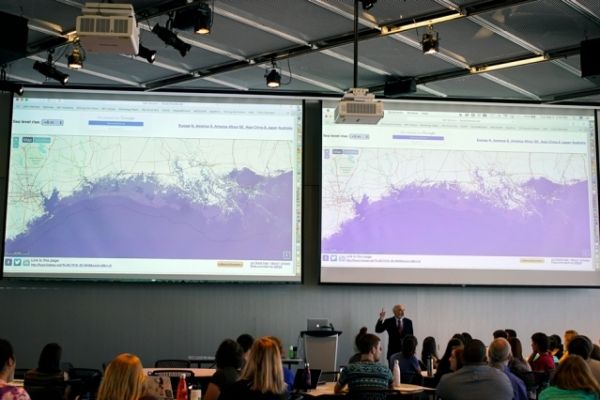At “SimPlanet” event, students test-drive new computer simulation to reveal outcomes of different policy decisions.
Evaluating the many possible strategies for curbing greenhouse gas emissions and limiting the destructive effects of a warming planet is a daunting and contentious task. This week, about 50 MIT students got a chance to try out new software that can visually demonstrate how different policy choices could affect the global outcome.
At Tuesday’s “SimPlanet” event at the MIT Media Lab, students had a chance to beta-test a new interactive energy and climate policy simulation model, En-ROADS, developed jointly by the MIT Sloan Sustainability Initiative and Climate Interactive, a nonprofit, nonpartisan think tank. Sponsored by MIT’s Environmental Solutions Initiative, the students worked in teams representing each of eight different interest groups — including developed and developing nations, environmental activists, and industries that make and use energy — using the model to explore the impacts of dozens of possible policies and how hard to push for each.
Then John Sterman, the Jay W. Forrester Professor of Management and a lead developer of the simulation, entered each group’s policies into the En-ROADS dashboard, instantly showing how those policies would affect energy use and greenhouse gas emissions between now and the year 2100, and what the expected change in global temperatures, sea level, and other impacts would be.
Continue reading at MIT.
Image via Melanie Gonick, MIT.


